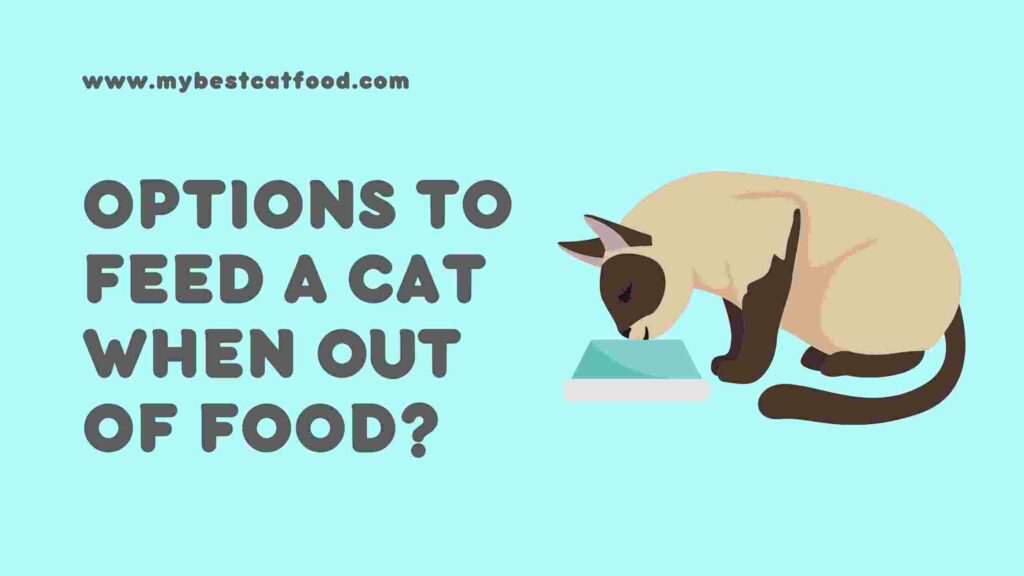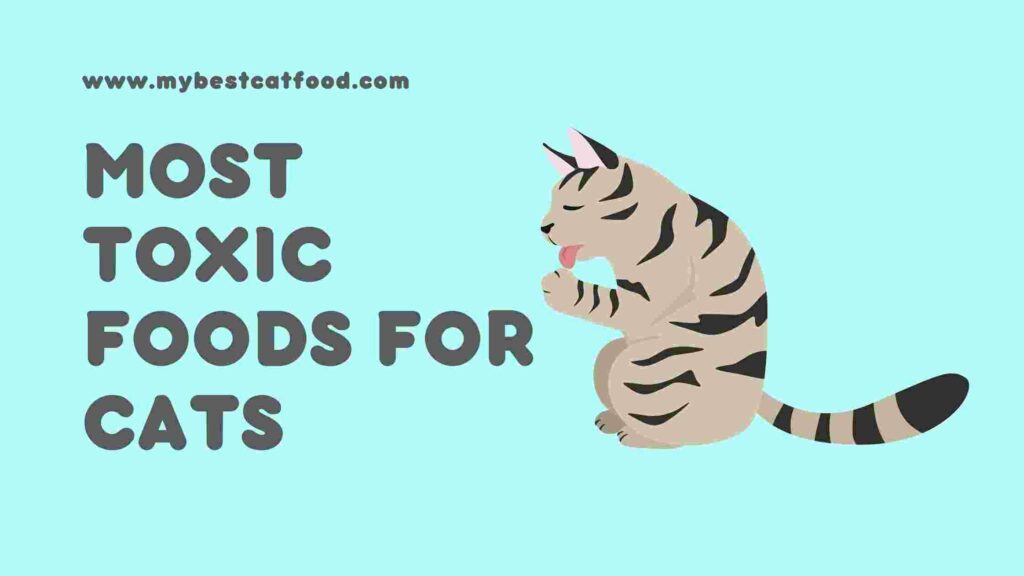Beyond question, we are surviving unusual and unpleasant times. While our pets can give an extraordinary wellspring of solace and stress relief, they can also cause us extra concern, especially regarding their care and health under the difficult conditions we face. The most important question comes that what to feed a cat when out of food?
Pet food might be an utmost priority of concern for some feline owners, especially if there are deficiencies in your area or city. Lately, pet food has been likely to freeze purchasing and amassing – and in case you are adequately fortunate to discover your feline’s type of food in stock, there might be limited stock which you can buy. Or then again, you might not be able or reluctant to branch out to the shops to get it.
But what if your cat’s particular food is currently unavailable in the market. These conditions may happen with anyone at any time in the life of cat owners. So now the question arises what to feed a cat when you’re out of food. But before understanding this, we must first understand how often you should feed your cat.
Sometimes, when you are out of food, some questions come to your mind, like feeding cats? What does a cat eat besides cat food? What to feed a cat when out of food? These types of questions come to your mind. But, here we have a solution for all these which helps you get out of this situation.
How Often Should You Feed Your Cat?
There is a lot of information out there about how often you should feed your cat, so we’ve done the hard work for you and compiled all the best advice from experts and vets to determine once and for all what is most conducive to your kitty’s health. Here are our results:
Kittens require food every 2-3 hours, while adult cats can go up to 12 hours. Kittens need more food according to their body weight to help their development than do grown-up felines, and along these lines ought to be taken care of all the more regularly for the day.
“Developing cats as long as a half year old enough might require three dinners every day,” says Francis Kallfelz, DVM, PhD, the board confirmed by the American College of Veterinary Nutrition and James Law Professor Emeritus of nourishment at Cornell University College of Veterinary Medicine. “From age a half year to development, most felines will do well when taken care of two times each day.”
It’s not necessarily true that feeding cats soon after waking up will lead to weight gain, and it may even help older cats’ litter box habits because their bowels are more active when they wake up. There seems to be no significant difference in weight between overnight fed or hungry cats, though.
When the feline turns into a grown-up, at around one year, taking care of them a few times per day is proper as a rule. Senior cats, age seven or more, should keep up with a similar routine taking care of the way.
Options to Feed a Cat When Out of Food?

Are you searching for a healthy snack for your cat? Have a question in your mind about what to feed a cat when out of food? Well, not only can some”human food” be safe for the cats, but here some unique and good groceries could be great for the cats. And today, here we find some fantastic food you can easily share with your cat.
Meat
Poetry, hamburger, and other meat are your little carnivore’s characteristic choices. Cooked poultry is your smartest choice. Skip meats high in sodium, like virus cuts or ham, as an excess of salt can be harmful to felines.
Fish
While you don’t need your kitty eating from the aquarium, taking care of him slick fish, for example, fish or mackerel, can help his visual perception, joints, and cerebrum.
Bananas
Youngsters aren’t the ones in particular who can profit from bananas, and they can be a solid nibble for felines, as well, even though they ought to be an uncommon treat because of their high sugar content.
Berries
Blueberries and strawberries are lower in sugar and high in cancer prevention agents. Blueberries and strawberries are good natural products to impart to your kitty… albeit likely not in a pie.
Cheese
Your cat can enjoy cheese as much as you do. Cheese like gouda cheese can be given to your cats as it is high in calcium and protein.
Eggs
Eggs are a great source of protein. So you can share it with your cat. Though while making eggs, make sure to give appropriately cooked eggs.
Spinach
Spinach is an excellent source of vitamins. Kittens can have spinach as they require vitamins in their diet but don’t serve spinach to grown-up cats.
Oats
Oats have loads of fibre, iron, and even protein, which are all helpful to your feline’s general wellbeing. You can likewise utilize them topically for skin issues.
Rice
It is not a fundamental piece of their eating regimen, and a bit of white rice will not hurt your feline. Indeed, it very well may be helpful in case she’s having some stomach-related issues.
Carrots
While felines, in contrast to people, don’t need veggies in their eating regimen, they can be a protected and sound treat. Your cat may grub on some cooked carrots yet keep away from crude ones as they might be a stifling risk.
What Cats Should Not Eat?
Cats love to eat, and that’s fine. It’s good for them. So long as you provide your kitty with a healthy diet as they need, there’s no reason why they shouldn’t stay slim and sleek. There are one food cats should avoid dog food. You may think it sounds delicious and will keep them entertained – but trust me: I know what I am talking about here! Even the smell of the stuff makes me gag.
Aren’t felines intended to catch, kill, and eat crude meat? Don’t they adore milk, cheddar, and cream? Tragically, some regular ‘human’ food varieties can cause gastrointestinal pain in felines or trigger an assortment of other medical issues. Get more familiar with the food varieties you shouldn’t take care of your feline.
Our felines are individuals from our family, our partners. Also, as their caretakers, it’s just normal for us to need to spoil them. However, a few food sources and treats can present genuine dangers to their wellbeing.
5 Most Toxic Foods For Cats

Onions and Garlic
Suppose you have this question about feeding a cat when out of food. You should also know what should not be given to cay, and cats should not eat raw garlic and raw onion. And, not only this, it is best when cats stay away from onions and garlic food items.
The reason behind this is that garlic and onion carry sulfoxides and disulfides. It can poison the cat by cutting down their red blood cells, which leads to anaemia, weight loss, and gastrointestinal issues.
Chocolate
Humans love chocolate, but cats shouldn’t eat chocolate. Because there is a tough toxic substance in chocolate known as theobromine, this chocolate toxicity substance may lead to tremors and irregular heart rhythm. So, never give chocolate to the cat, but the worst type of chocolate for the cat is baking chocolate.
Caffeine
For your feline friend, caffeine is not essential, and it is usually found in coffee, tea, chocolate, colas, etc. Cats shouldn’t drink coffee or tea. You may be surprised that a small dose of caffeine may cause anxiety, rapid breathing, tremors, and some heart trembles. And, sometimes a large quantity of caffeine can be deadly and may lead to death.
Alcohol
Alcohol is entirely not good for the cat, and it is one of the hazardous beverages for cats. You may get surprised, but a single amount of alcohol can damage your cat’s liver and brain. Alcohol is dangerous for cats, and you mustn’t hesitate to get in connection with a veterinarian if you presume your little cat has been poisoned by alcohol.
Xylitol
Usually, gums include Xylitol that can be easily observed in other products like candy, toothpaste, diet foods, and baked items. And in case your cat ingests Xylitol, then this thing can lead to liver failure.